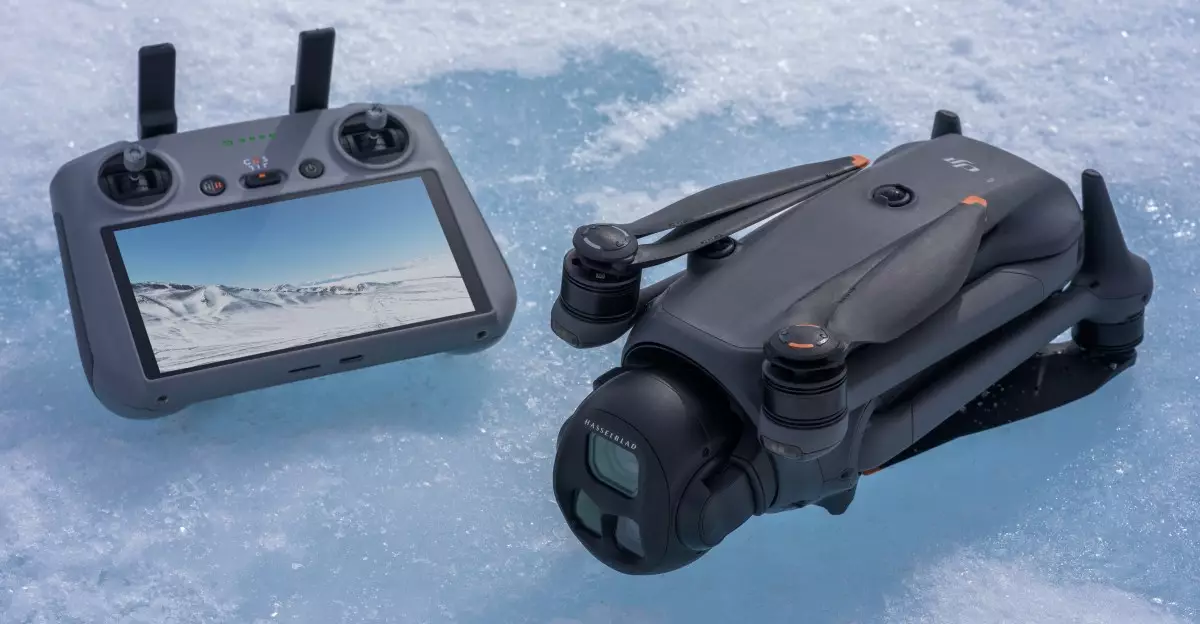The world of high-end consumer drones is often marked by anticipation and excitement, especially when a renowned brand like DJI announces a new release. This urgency peaks with the launch of the DJI Mavic 4 Pro, a product that was surprisingly made available in the U.S. despite initial indications it would not make its way to American retailers. As consumers jockey for a chance to own one, the elusive availability and mysterious circumstances surrounding its entry into the U.S. market offer us a revealing glimpse into the complexities of global commerce and modern consumerism.
The Market Dynamics at Play
The scenario becomes even more intriguing when considering the actions of two major retailers: Adorama and B&H. Both are based in New York City, and remarkably, they began listing the Mavic 4 Pro at competitive prices soon after the drone was announced. At $2,699 for the base model and escalating to over $4,600 for higher-end packages, these prices highlighted the premium nature of the product. Yet, despite DJI’s apparent decision to forgo the U.S. launch due to tariffs and supply chain issues, these retailers seemed to have circumvented the bureaucratic red tape. Why? This is a question that opens several avenues of speculation regarding supply chain strategies and retail tactics in a fluctuating market.
DJI’s Strategic Gaps and Their Consequences
In a world where information travels at the speed of light, DJI’s omission of the U.S. market from its rollout plan raises eyebrows. The absence of pre-launch reviews and the reticence to provide pricing to U.S. media outlets suggest a lack of communication or a strategic misstep by the company. Did DJI underestimate U.S. demand, or was this an intentional hiccup in their market strategy? Furthermore, the rush to sell the product by Adorama and B&H implies that the retailers are either more aware of consumer interest or simply confident in their ability to manage logistics against a backdrop of uncertainty.
It’s fascinating to consider that while the drone’s launch was shrouded in mystery, the eagerness expressed by potential buyers was unmistakable. Retailers were swiftly draining their stocks, confirming that consumers were clearly hungry for this latest drone marvel. The fluctuating availability of the Mavic 4 Pro foreshadows a nuanced dance between supply and consumer demand typical of today’s tech-savvy society.
Retailers Take the Reins
The fact that two retailers would make the Mavic 4 Pro accessible amidst such ambiguity speaks volumes about the adaptive nature of retail in the tech sector. As I spoke to representatives from both Adorama and B&H, their different approaches to the Mavic’s availability shined a spotlight on the competitive environment of tech sales. B&H’s cautious reserve with preorder assurances stands in contrast to Adorama’s more aggressive selling strategy, marking a split-response approach to customer engagement.
Adorama’s sales rep, Steve Chill, claimed that stocks were limited and dwindling—an assertion that turned out to be both a reflection of reality and a savvy marketing tactic. The urgency he invoked drove home to potential consumers that the clock was ticking. This real-time engagement with customers encapsulates the essence of modern retail: a blend of information transparency and the psychological play of scarcity.
Ushering in a New Era of Drone Innovations
The DJI Mavic 4 Pro is not merely another drone; it represents a significant leap in drone technology. It features advanced capabilities such as enhanced camera performance and improved flight stability, making it a coveted item for professionals and enthusiasts alike. However, the governance over its market presence has instigated a discourse regarding the control companies wield over product availability in the age of digital retail. How much power should a brand exert over their offering in response to external market influences, and how much should they leave in the hands of retailers who can react swiftly to consumer interest?
As the dust settles on this launch event, one thing is clear: the launch of the Mavic 4 Pro has ignited discussions that go far beyond its specifications. From tariff implications to strategic retail decisions, this drone serves as a case study for the intersection of consumer behavior and corporate strategy in a hyper-connected world. With the impending arrival of more such innovations, the stakes for both consumers and companies alike are set to rise. The future will surely test both retailers and manufacturers as they navigate these waters of rapidly shifting demands tempered by global challenges.


Leave a Reply